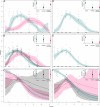Protective Efficacy of H9N2 Avian Influenza Vaccines Inactivated by Ionizing Radiation Methods Administered by the Parenteral or Mucosal Routes
- PMID: 35898545
- PMCID: PMC9309530
- DOI: 10.3389/fvets.2022.916108
Protective Efficacy of H9N2 Avian Influenza Vaccines Inactivated by Ionizing Radiation Methods Administered by the Parenteral or Mucosal Routes
Abstract
H9N2 viruses have become, over the last 20 years, one of the most diffused poultry pathogens and have reached a level of endemicity in several countries. Attempts to control the spread and reduce the circulation of H9N2 have relied mainly on vaccination in endemic countries. However, the high level of adaptation to poultry, testified by low minimum infectious doses, replication to high titers, and high transmissibility, has severely hampered the results of vaccination campaigns. Commercially available vaccines have demonstrated high efficacy in protecting against clinical disease, but variable results have also been observed in reducing the level of replication and viral shedding in domestic poultry species. Antigenic drift and increased chances of zoonotic infections are the results of incomplete protection offered by the currently available vaccines, of which the vast majority are based on formalin-inactivated whole virus antigens. In our work, we evaluated experimental vaccines based on an H9N2 virus, inactivated by irradiation treatment, in reducing viral shedding upon different challenge doses and compared their efficacy with formalin-inactivated vaccines. Moreover, we evaluated mucosal delivery of inactivated antigens as an alternative route to subcutaneous and intramuscular vaccination. The results showed complete protection and prevention of replication in subcutaneously vaccinated Specific Pathogen Free White Leghorn chickens at low-to-intermediate challenge doses but a limited reduction of shedding at a high challenge dose. Mucosally vaccinated chickens showed a more variable response to experimental infection at all tested challenge doses and the main effect of vaccination attained the reduction of infected birds in the early phase of infection. Concerning mucosal vaccination, the irradiated vaccine was the only one affording complete protection from infection at the lowest challenge dose. Vaccine formulations based on H9N2 inactivated by irradiation demonstrated a potential for better performances than vaccines based on the formalin-inactivated antigen in terms of reduction of shedding and prevention of infection.
Keywords: H9N2; formalin-inactivated; irradiated; mucosal; subcutaneous; vaccines.
Copyright © 2022 Bortolami, Mazzetto, Kangethe, Wijewardana, Barbato, Porfiri, Maniero, Mazzacan, Budai, Marciano, Panzarin, Terregino, Bonfante and Cattoli.
Conflict of interest statement
The authors declare that the research was conducted in the absence of any commercial or financial relationships that could be construed as a potential conflict of interest.
Figures




Similar articles
-
A Dose-Response Study of Inactivated Low Pathogenic Avian Influenza H9N2 Virus in Specific-Pathogen-Free and Commercial Broiler Chickens.Avian Dis. 2016 May;60(1 Suppl):256-61. doi: 10.1637/11143-050815-Reg. Avian Dis. 2016. PMID: 27309065
-
Efficacy of an inactivated bivalent vaccine against the prevalent strains of Newcastle disease and H9N2 avian influenza.Virol J. 2017 Mar 16;14(1):56. doi: 10.1186/s12985-017-0723-7. Virol J. 2017. PMID: 28302119 Free PMC article.
-
Vaccination with recombinant 4 × M2e.HSP70c fusion protein as a universal vaccine candidate enhances both humoral and cell-mediated immune responses and decreases viral shedding against experimental challenge of H9N2 influenza in chickens.Vet Microbiol. 2014 Nov 7;174(1-2):116-26. doi: 10.1016/j.vetmic.2014.09.009. Epub 2014 Sep 23. Vet Microbiol. 2014. PMID: 25293397 Clinical Trial.
-
Severe acute respiratory syndrome vaccine development: experiences of vaccination against avian infectious bronchitis coronavirus.Avian Pathol. 2003 Dec;32(6):567-82. doi: 10.1080/03079450310001621198. Avian Pathol. 2003. PMID: 14676007 Free PMC article. Review.
-
Leveraging Electron Beam (eBeam) Technology for Advancing the Development of Inactivated Vaccines.Vaccines (Basel). 2025 Feb 13;13(2):179. doi: 10.3390/vaccines13020179. Vaccines (Basel). 2025. PMID: 40006726 Free PMC article. Review.
Cited by
-
Vaccination with recombinant Lactococcus lactis expressing HA1-IgY Fc fusion protein provides protective mucosal immunity against H9N2 avian influenza virus in chickens.Virol J. 2023 Apr 21;20(1):76. doi: 10.1186/s12985-023-02044-9. Virol J. 2023. PMID: 37085816 Free PMC article.
-
Spray vaccination with a safe and bivalent H9N2 recombinant chimeric NDV vector vaccine elicits complete protection against NDV and H9N2 AIV challenge.Vet Res. 2025 Jan 31;56(1):24. doi: 10.1186/s13567-025-01448-5. Vet Res. 2025. PMID: 39891242 Free PMC article.
-
Mucosal immunization with a low-energy electron inactivated respiratory syncytial virus vaccine protects mice without Th2 immune bias.Front Immunol. 2024 Apr 5;15:1382318. doi: 10.3389/fimmu.2024.1382318. eCollection 2024. Front Immunol. 2024. PMID: 38646538 Free PMC article.
-
Influenza Virus Inactivated by Heavy Ion Beam Irradiation Stimulates Antigen-Specific Immune Responses.Pharmaceutics. 2024 Mar 27;16(4):465. doi: 10.3390/pharmaceutics16040465. Pharmaceutics. 2024. PMID: 38675126 Free PMC article.
-
Development of an experimental model using cold stress to assess the pathogenicity of two Moroccan AI H9N2 isolates from 2016 and 2022 in commercial broiler chickens.PLoS One. 2025 Apr 4;20(4):e0320666. doi: 10.1371/journal.pone.0320666. eCollection 2025. PLoS One. 2025. PMID: 40184370 Free PMC article.
References
LinkOut - more resources
Full Text Sources

